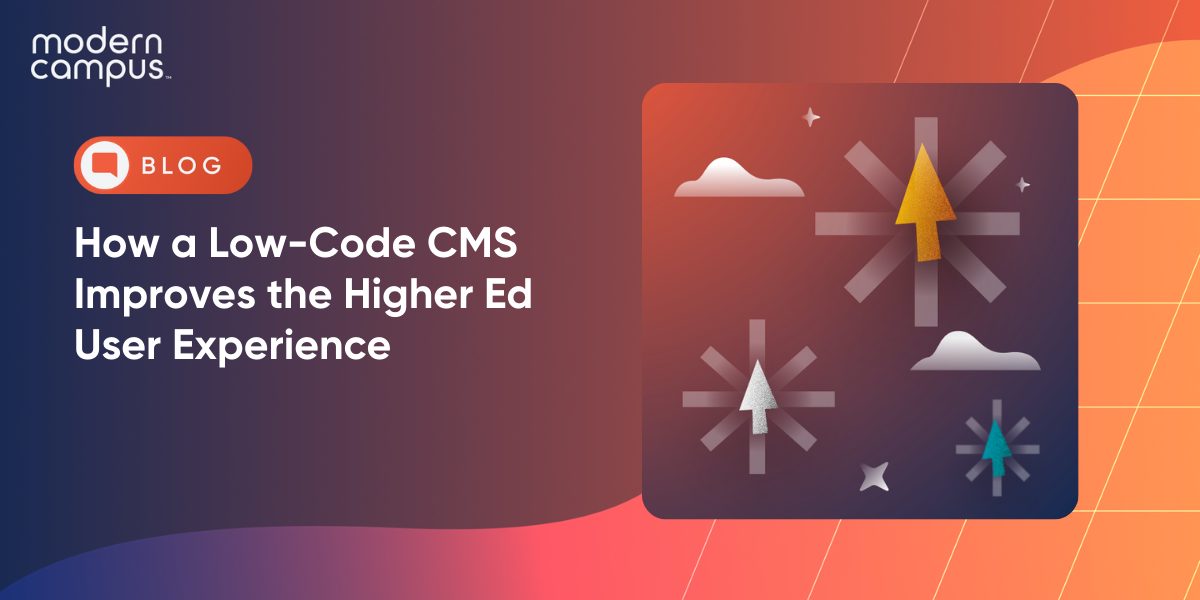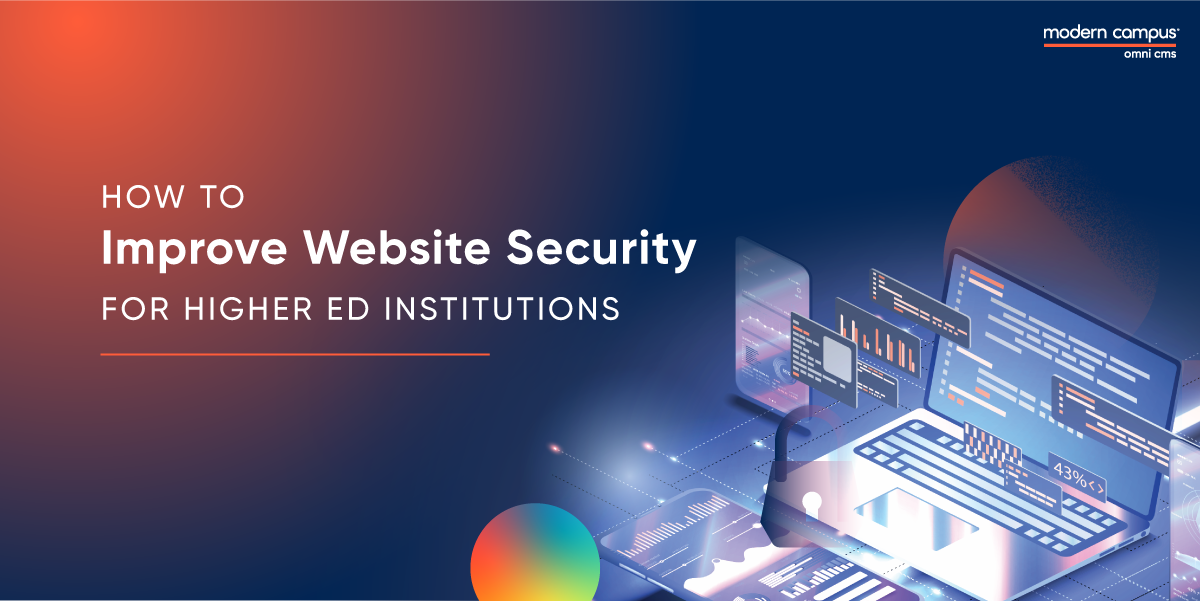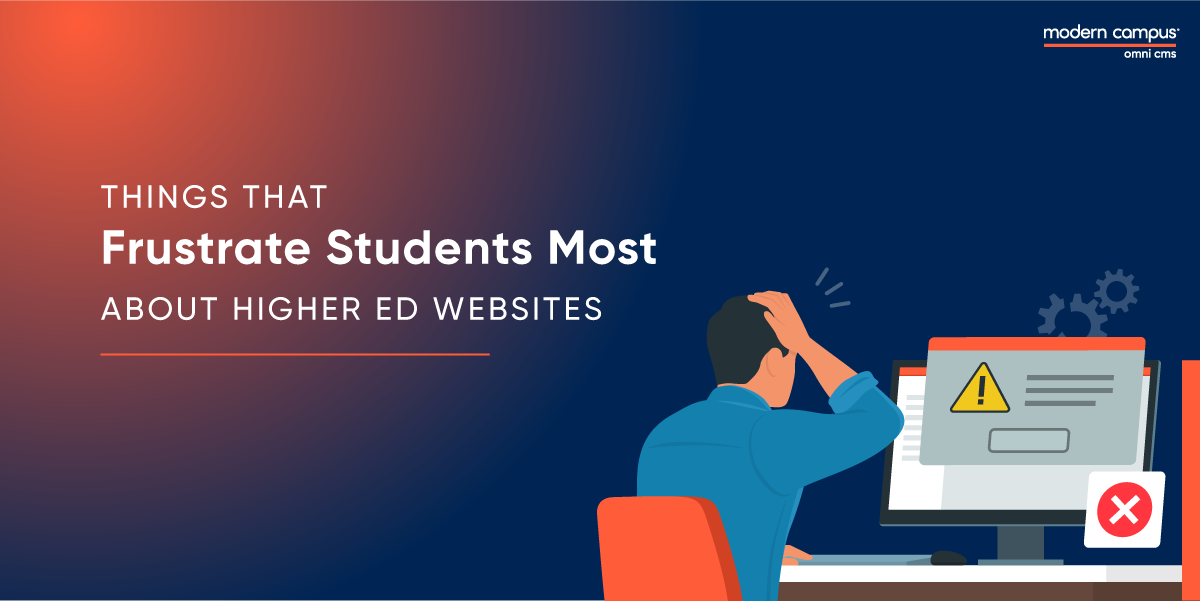4 Reasons Why Your College or University Needs Website Personalization Now
Six out of 10 students say that colleges lag behind all other industries in providing a personalized digital experience. And yet personalization is a powerful way to build relationships that last for the entire length of the learner’s journey. This blog highlights 4 reasons why your college or university needs website personalization now.
1. Website personalization is best for students.
At a time where students are questioning the value of college, website personalization helps counter their concerns with information tailored to
their unique interests and goals. Everyone likes to have their wants and needs acknowledged.
Personalization does this by integrating behavioral data into your school’s content
delivery framework so that each student is presented with a customized learner journey. When
programs of interest are displayed with clear paths from enrollment to graduation
to job, students understand what is needed to succeed and the ultimate return on their
academic investment.
Website personalization is also beneficial for institutions. Nearly 70% of students say that the school’s website is a main influence on their college decision-making. It’s only natural for students
who enjoy an engaging, intuitive and interactive experience on your website to further
explore all your school has to offer.
2. Website personalization introduces learners to different ways of learning that
they might not have considered before.
Let’s face it: a business degree introduces students to general business principles
but it doesn't prepare students for specialty work. In fact, students might not even
know they need certain skills or how to go about getting those skills, for the career
they desire.
However, with website personalization, institutions can personalize career pathways
by displaying microcredentials alongside academic programs. Microcredentials, credentials that are not degrees and are shorter in length than two-year programs, provide
students and alumni with specialty workforce skills—skills that can set a new graduate
apart or make an alumnus more employable. The key is designing a website personalization
strategy based on data that anticipates a learner’s wants and needs at every turn.
“A typical transcript is actually pretty vague. You have a list of courses and course numbers and grades that somehow add up to a degree, and the assumption is that the person knows something after having gone through this experience. I think that the use of digital badges and microcredentials really paints a deeper and more accurate picture of what an individual has accomplished and learned. Any institution of higher learning that is relevant and paying attention to current trends will at least dip a toe in the water of microcredentials and see how they work for them.”
3. Website personalization is the new standard—not a trend.
More than ever, new technologies are allowing brands to interact 1-to-1 with their audiences. Consumer data and algorithms drive personalization efforts and as these technologies become more advanced, so will marketing strategies that rely on personalization to build connections with customers. Knowing that higher ed historically lags behind business in implementing best practices and new technologies, it’s safe to say that the longer you avoid this new standard in digital engagement, the less likely your institution will be positioned to compete with schools who are proactive in the personalization game.
In the era of Netflix and Amazon Prime, we increasingly want and expect everything to be personalized. ... Students will want courses that are relevant to them, and that don’t repeat what they already know. They’ll want support services specific to their personal circumstance, recommendations for student clubs and activities based on their interest profile, and readily available classes, at times and in formats that work for their schedule.
4. Website personalization for higher ed increases conversions.
Successful website personalization creates a chain reaction: For example, 89% of prospective students like to see their name in marketing materials. When students feel that a college or university website intuits their unique needs, they stay on the website for longer periods of time. And when visitors click through to three or more pages because of personalized content, it doubles the rate of conversion as compared to those exposed to two pages. When they view 10 or more pages, the conversion increase is eighteen times higher.
Your website is one of many steps in the student recruitment process, but it may well be the most important. The first place students go to learn more about a college is the website and if that site doesn't provide them with the information they need, they’ll simply move on one that does.
Higher ed is undergoing a transformative shift where engaging students begins with a dynamic digital engagement platform with all the resources needed to support a comprehensive learner journey.
If you’re ready for your college or university to be at the forefront of this movement, schedule a demo to learn what it means to be a modern campus.
Website Design & Personalization
Last updated: August 6, 2021



